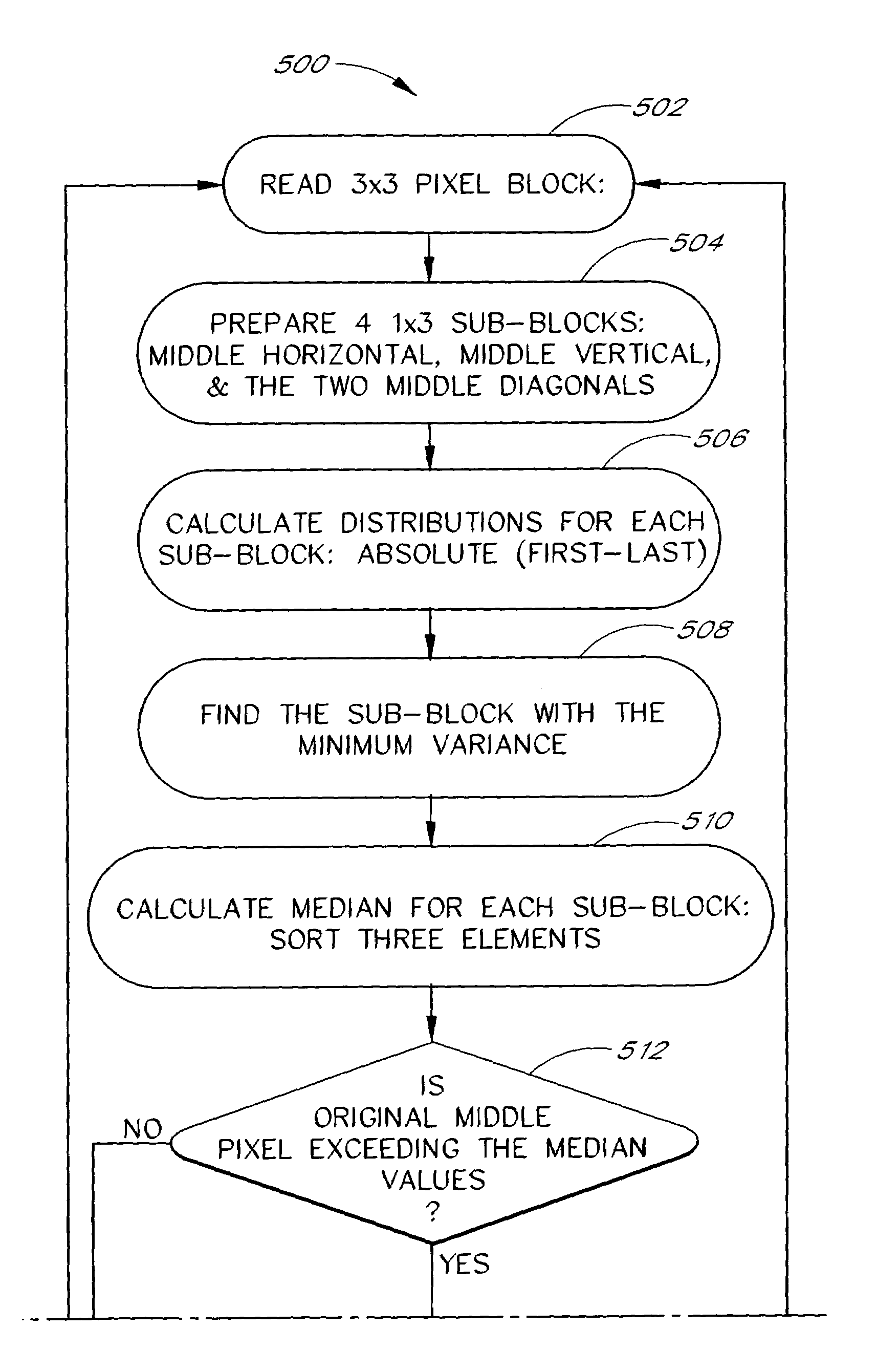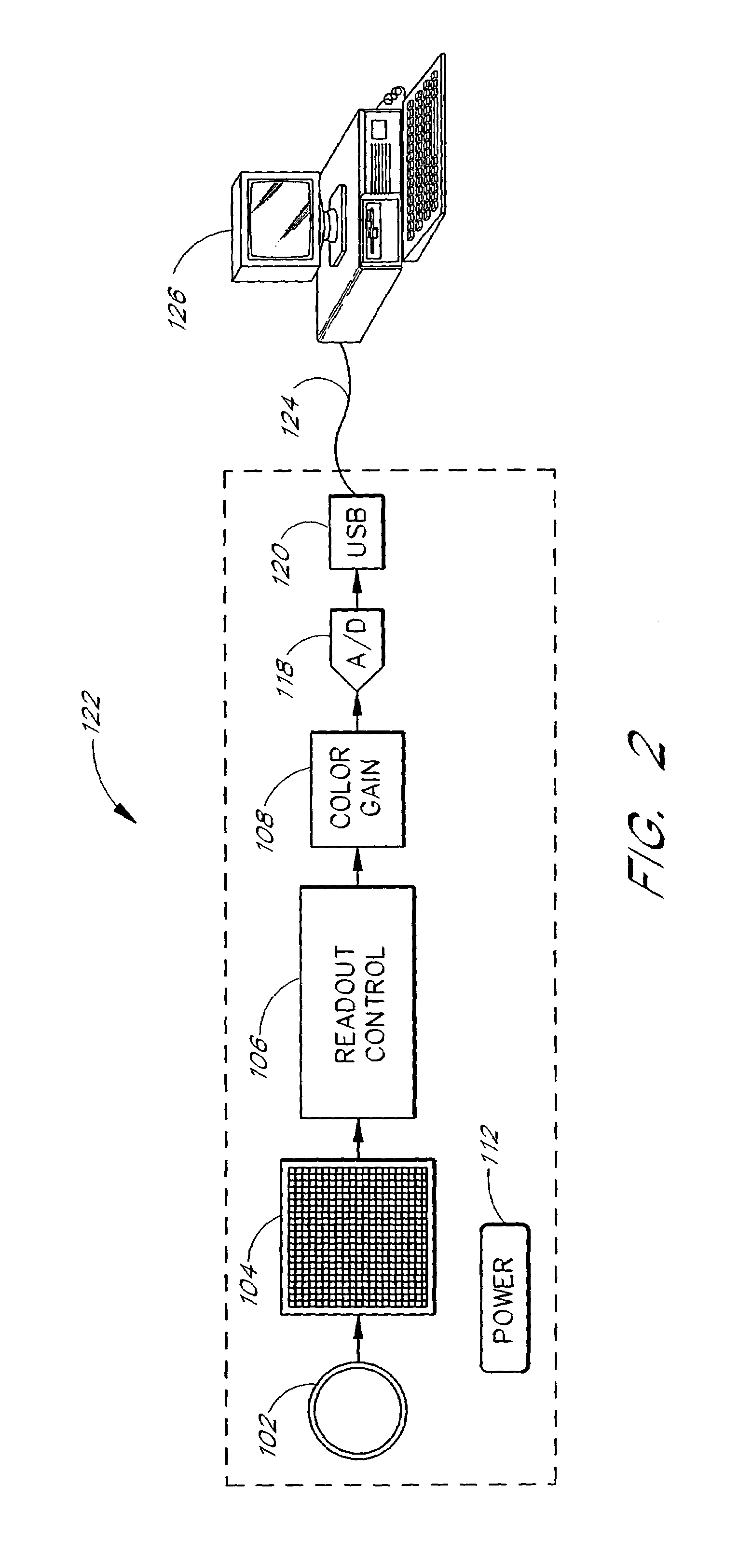Methods and systems for detecting defective imaging pixels and pixel values
a technology of defective imaging pixels and pixel values, applied in the field of imaging devices, can solve the problems of only correcting the identified bad pixels using conventional techniques, destroying edges, and detecting bad pixels and bad pixel values, so as to prevent the loss of edges, reduce the need for bad pixel look up tables, and reduce the effect of high frequency conten
- Summary
- Abstract
- Description
- Claims
- Application Information
AI Technical Summary
Benefits of technology
Problems solved by technology
Method used
Image
Examples
Embodiment Construction
[0033]The present invention relates to a novel imaging system that provides flexible addressing and processing of imaging pixel sensor elements. The novel architecture of the present invention allows for a highly integrated, low cost imager with high speed performance and good image quality. Defective or bad pixels within an array of active or passive pixel sensor cells are detected and compensated for, thereby reducing or eliminating the visible effects the bad pixels may have on resulting images. In one embodiment, the imaging system provides an on-line, on-the-fly bad pixel detection and correction process that provides high speed operation, reduced non-volatile storage requirements, and good performance.
[0034]For example, one embodiment of the present invention provides an on-line bad pixel detection and correction process and circuit that compares a first pixel readout value with another value derived at least in part on the readout values of other pixels in first pixel's local...
PUM
 Login to View More
Login to View More Abstract
Description
Claims
Application Information
 Login to View More
Login to View More - R&D
- Intellectual Property
- Life Sciences
- Materials
- Tech Scout
- Unparalleled Data Quality
- Higher Quality Content
- 60% Fewer Hallucinations
Browse by: Latest US Patents, China's latest patents, Technical Efficacy Thesaurus, Application Domain, Technology Topic, Popular Technical Reports.
© 2025 PatSnap. All rights reserved.Legal|Privacy policy|Modern Slavery Act Transparency Statement|Sitemap|About US| Contact US: help@patsnap.com



